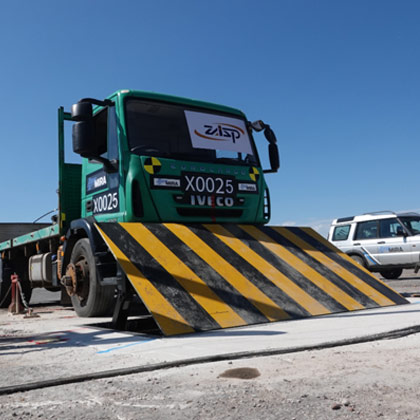Dans le domaine des solutions de sécurité, Un outil puissant qui entre souvent en jeu est le barrière de coin. Cette technologie innovante a gagné en importance pour son efficacité dans diverses applications, offrant une sécurité et un contrôle améliorés. Examinons ce qu'est une barrière de coin et explorons les scénarios dans lesquels elle trouve une utilisation optimale..
Définition des barrières de coin
Les barrières compensées sont des dispositifs de sécurité spécialisés conçus pour contrôler l'accès des véhicules en créant une barrière physique sous la forme d'un obstacle en forme de coin.. Ces barrières sont généralement installées aux points d'entrée où un accès contrôlé est crucial, comme les installations militaires, installations gouvernementales, et zones de haute sécurité.
Principales caractéristiques et fonctions
Les barrières compensées fonctionnent en s'élevant du sol pour obstruer le passage des véhicules venant en sens inverse.. Ils sont connus pour leur déploiement rapide et leurs matériaux à haute résistance, En leur faisant un dissuasion efficace contre l'accès non autorisé. Ces barrières sont souvent intégrées aux systèmes de contrôle avancé, améliorer leur fonctionnalité et leur adaptabilité à différents besoins de sécurité.
Applications dans divers secteurs
le polyvalence barrières en coin Les rend adaptés à une gamme d'applications. Ils sont couramment utilisés dans les installations militaires, points de contrôle des frontières, aéroports, et les emplacements d'infrastructures critiques. La possibilité de fournir une sécurité rapide et fiable fait des barrières de coin une composante indispensable des systèmes de sécurité complets.
Optimisation des protocoles de sécurité
L'intégration des barrières de coin dans les protocoles de sécurité améliore les mesures de sécurité globales. Leur placement stratégique et leurs capacités de réponse rapide contribuent à la prévention de l'accès aux véhicules non autorisés, protéger les personnes et les biens.
Questions et réponses
Q: En quoi les barrières en coin diffèrent-elles des barrières de sécurité traditionnelles?
UN: Les barrières de coin diffèrent dans leur conception, avec un obstacle en forme de coin monte du sol pour bloquer les véhicules. Les barrières traditionnelles peuvent inclure des portes ou des bornes, Offrir des mécanismes distincts pour contrôler l'accès.
Q: Où sont les barrières de coin les plus souvent déployés?
UN: Les barrières en coin sont couramment déployées dans des zones de haute sécurité telles que les bases militaires, installations gouvernementales, et points d'infrastructure critiques. Leur efficacité dans le déploiement rapide les rend adaptés à diverses applications de sécurité.
Conclusion
En conclusion, Comprendre ce qu'est une barrière de coin et quand il est utilisé est essentiel pour mettre en œuvre des mesures de sécurité robustes. Ces barrières jouent un rôle central dans la sauvegarde des zones sensibles et contribuent de manière significative à l'infrastructure de sécurité globale.


